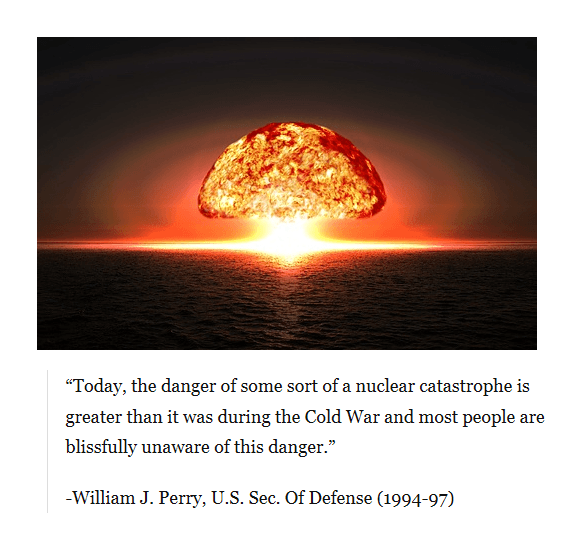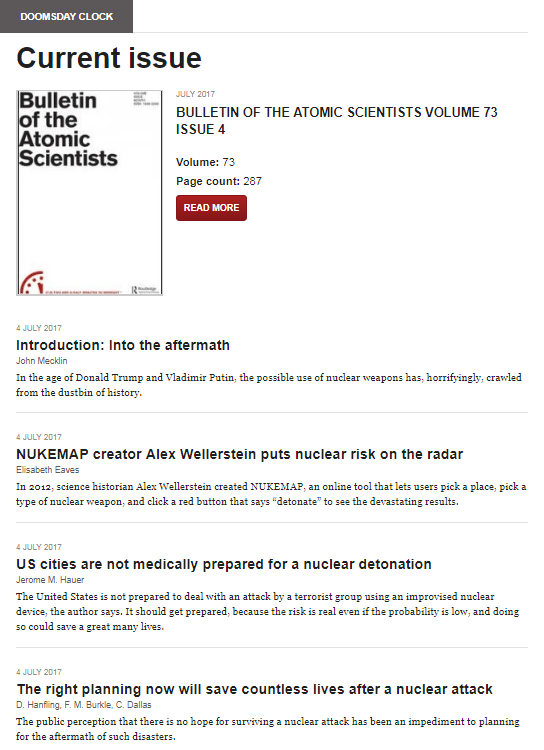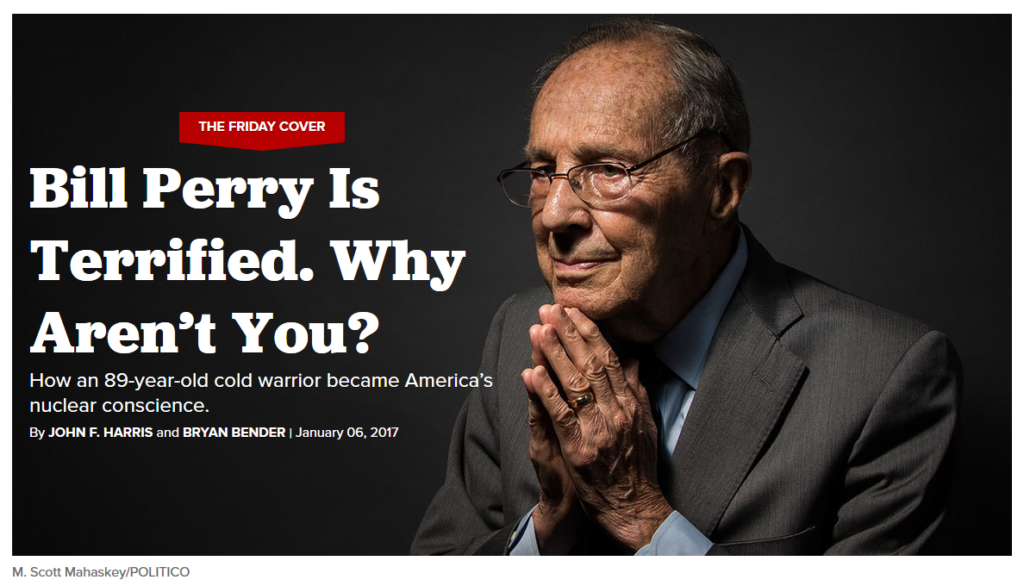As the US president ramps up his rhetoric in Europe, pointing at enemies ranging from a “fake news” press to North Korea, from “urban carnage” to Iran, from Democrats and those who question his “modern day presidential” tweeting to whatever and whomever he chooses to target in the daily news cycle, a clock ticks
Even as a unprecedented nuclear ban treaty is a day away from agreement at the United Nations, the US president speaks of nuclear war and taking “nothing off the table” as he exerts his personal threats backed by the power of the US military. The commander-in-chief on the world stage is, as former president George W. Bush once said, the “decider-in-chief” and who knows what’s coming next from the modern-day decider-in-chief.
Those who monitor the threat horizon of nuclear weapons are moving the Doomsday Clock closer to midnight.
Over the decades since the Hiroshima and Nagasaki bombings, the worldwide taboo against the use of nuclear weapons drove agreements such as SALT, START and the INF Treaty. Over the last year, however, the taboo seems to be weakening: North Korea continues to test nuclear weapons, Russia is apparently re-thinking its commitment to the INF Treaty, there’s talk of a German nuclear weapon, and US president Donald Trump has wondered why, if the US has nuclear weapons, it would not use them.
The July/August issue of the Bulletin’s digital journal explores “After midnight,” an unsparing look at the aftermath of the use of nuclear weapons. Bulletin editor John Mecklin states: “In this special issue, ‘After midnight,’ top experts examine the ethics and practicalities of preparing a humanitarian response to the use of nuclear weapons, some realistic scenarios that could lead to regional nuclear weapons use—mini-Armageddons, if you will excuse the oxymoron—and various ways in which nuclear warfare might be forestalled or, in the event the unthinkable begins, stopped.”
♦
At the United Nations / July 2017
Draft treaty on the prohibition of nuclear weapons

Will negotiators finish by July 7? Will the treaty leave loopholes?
International Nuclear Negotiations Continue
If adopted on Friday, July 7th, the Treaty will be opened for signature on September 19, 2017, the first day of regular debate in the fall session of the General Assembly, when heads of state and other dignitaries will be present.
The Treaty, if adopted by at least a two-thirds majority vote of states, can be amended at regular or extraordinary meetings of signatory states by the same two-thirds majority.
The Treaty will enter in force 90 days after at least 50 countries have ratified it.
♦
Nuclear Issues / Cold War 2.0
“I miss it, the Cold War. It gave you a reason to get up in the morning.”
— Harry “Rabbit” Angstrom, in John Updike’s Rabbit at Rest (1990)
President Trump’s call for a new global arms race…
♣
From StratDem’s associate, GreenPolicy360
On Nuclear Weapons
A New US President, a New US Commander-in-Chief
● Nuclear Weapons and Proliferation
● Via the Independent, UK — January 25, 2017
- New legislation to ban president Trump from ‘first use’ of nuclear weapons w/o Congressional Declaration of War
♠




